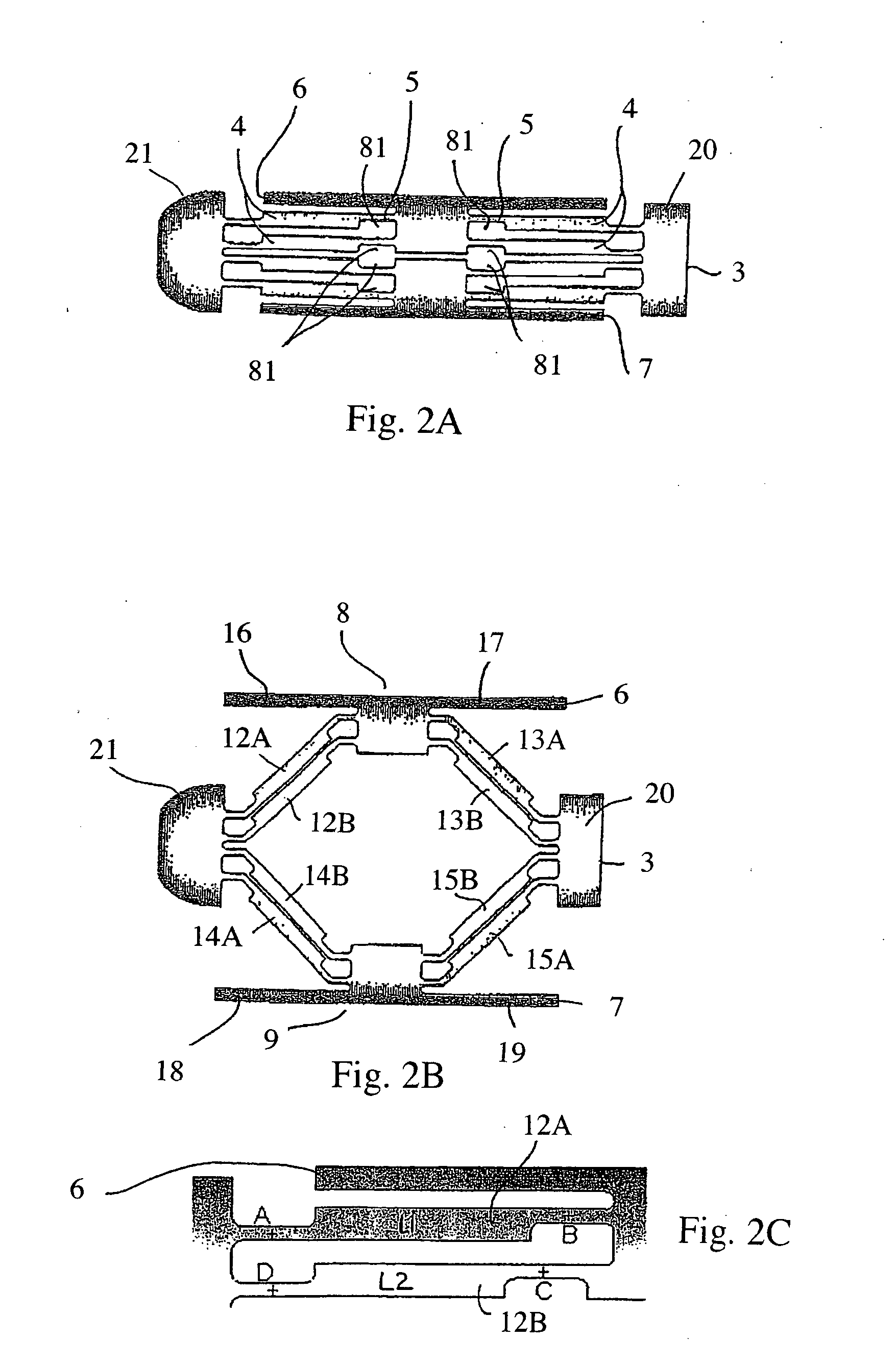Methods and apparatuses for bone restoration
a bone restoration and apparatus technology, applied in the field of surgical implants, can solve the problems of balloon withdrawal from the patient's body, numerous manipulations, kyphoplasty methods, etc., and achieve the effect of increasing the contact or support surfa
- Summary
- Abstract
- Description
- Claims
- Application Information
AI Technical Summary
Benefits of technology
Problems solved by technology
Method used
Image
Examples
Embodiment Construction
[0051] The expansible implant 1 represented in FIGS. 1A to 7 may include one or more of the following: [0052] a single determined expansion plane 2, which may be intrinsic to the implant, [0053] means 3 for positioning the expansible implant in the bone allowing the expansion plane to correspond with a bone restoration plane, [0054] means 4 for opening out the expansible implant in the single expansion plane 2, [0055] means 5 for controlling a determined expansion value, between a minimum thickness A of the implant before any expansion of the latter and a maximum thickness B of the implant after its maximum expansion, and [0056] a first 6 and a second 7 opposite plate which are able to form respectively a first 8 and a second 9 support surface in the bone intended to be moved apart one from the other along the single expansion plane 2 during expansion of the implant 1.
[0057] As shown in FIGS. 1A and 1B, implant 1 may include a cylindrical shape with a transverse circular exterior s...
PUM
 Login to View More
Login to View More Abstract
Description
Claims
Application Information
 Login to View More
Login to View More - R&D
- Intellectual Property
- Life Sciences
- Materials
- Tech Scout
- Unparalleled Data Quality
- Higher Quality Content
- 60% Fewer Hallucinations
Browse by: Latest US Patents, China's latest patents, Technical Efficacy Thesaurus, Application Domain, Technology Topic, Popular Technical Reports.
© 2025 PatSnap. All rights reserved.Legal|Privacy policy|Modern Slavery Act Transparency Statement|Sitemap|About US| Contact US: help@patsnap.com



